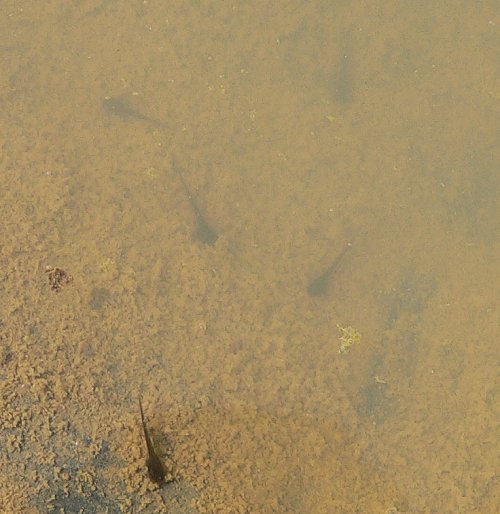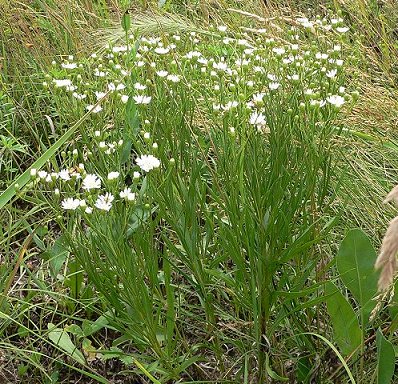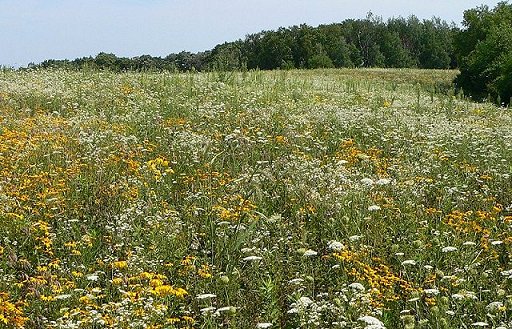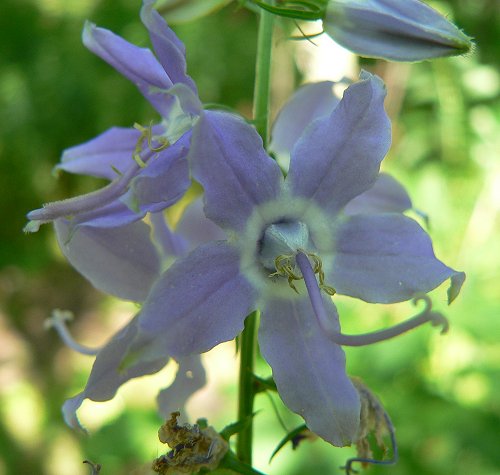More hot days – they really slow down the work on the farm. We haven’t had much rain, but the puddle in the frog pond has gotten a little bigger, and now there are dozens of tiny tadpoles swimming in it.
Tadpoles

I collected Canada Anemone seeds in the wetland and planted them in some of the areas where I sprayed Reed Canary Grass last year, and in some places where I’ve been cutting down Wild Parsnip. Wayne Hunke says that if you plant the seeds right away they are more likely to germinate – I’ve planted them before, but only after the seeds had dried out, and I’ve never gotten them to grow.
While I was in the wetland, I heard loud splashing and went to investigate. I made a lot of noise, since I had to walk through a bed of Reed Canary Grass, and when I got close to the creek – even before I could see it – a doe and a fawn came racing up the bank. I must have startled them while they were cooling off in the creek.
I got a nice photo of a Silver-bordered Fritillary in the wetland.

Mike mowed Buffalo Ridge prairie again – he says there are Black-eyed Susans blooming in it.
Both the Cat’s Paw Prairie and the Narrows Prairie are looking very bright and full of flowers. Here’s a clump of White Goldenrod in the Cat’s Paw Prairie.

Here’s a view of the Cat’s Paw Prairie (its third summer) with Prairie Brome, White Goldenrod, Wild Rye, and Yellow Coneflower. This is the prairie we planted with a seed drill – I think the Black-eyed Susans got planted too deep – there aren’t very many and I planted lots.

And here’s the Narrows Prairie (now its second summer) with plenty of Black-eyed Susan. The tall plants sticking up above the rest are mostly Field Thistle (Cirsium discolor). The white flowers are Fleabane and Queen Anne’s Lace.

I discovered a wonderful new plant – I’m always surprised to find one that’s so big and obvious, but I’ve never seen it before. This one is called American Bellflower (Campanula americana), and it’s growing in the woods along the intermittent stream bank in 3 Finger Valley.

This is a White Spotted Sable moth (Anania funebris) – we often see them fluttering over the gravel on the driveway. They have white spots on the back wings too, so when their wings are moving they’re really spectacular – even though they’re so tiny – only about half an inch long.

